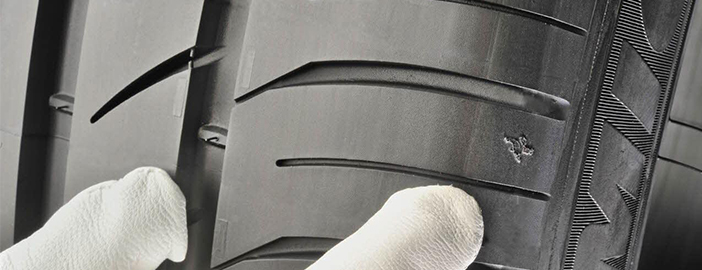WEAR
Tires become worn over time.
But this period depends on a variety of factors including driver behavior, the roughness of the road surface, the mechanical condition of the vehicle and tire pressure. The major risk is the loss of adhesion on wet ground, if the remaining tread cannot evacuate any more the water in the contact with the road.
BUT HOW DO YOU CHECK TREAD LEVELS?

Tread wear indicators, built into the main tread grooves, show the tread depth. On MICHELIN tires, the Michelin Man figure shows where these indicators are located. A tire must be changed as soon as it wears down to these indications. Tread depth remaining is then 1.6 mm, which corresponds to the legal minimum.
Checking tires for wear also involves getting them checked regularly, both inside and outside, by a tire specialist.